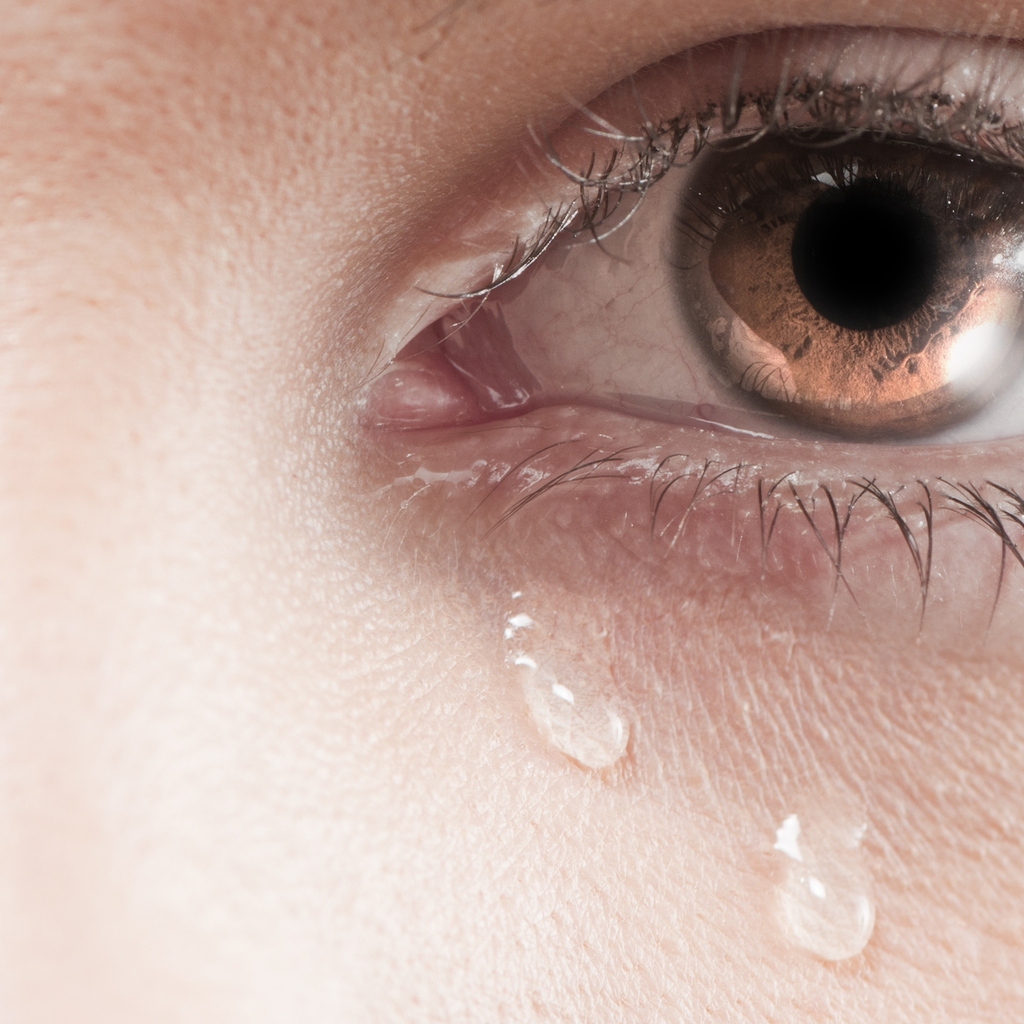Sometimes, the most profound lessons arrive not in grand speeches or sudden epiphanies, but in the quiet, often messy, act of crying. It's almost as if our bodies hold a secret language, a way of communicating deep truths when words simply won't do. These are the moments when the tears that taught me truly begin to flow, carrying with them unexpected wisdom.
You know, it's pretty common to see tears as just a sign of sadness or hurt, but they are, in fact, so much more than that. Our eyes produce these clear, salty drops for many different reasons, some of which have nothing at all to do with feeling down. They are, in a way, a remarkable part of our very being, serving many purposes for our eyes and our inner world.
This idea, that tears can be teachers, is something that Morgan Richard Olivier explores with a lot of honest feeling and discovery. Her work, a collection of poetry and prose, really invites you to think about how those moments of crying, along with the difficult times and even the good things, all play a part in how we grow and find our way. It’s about seeing the lessons, the different ways of thinking, and the feelings we go through when facing life's tests, and how these experiences truly become the tears that taught me.
Table of Contents
- What Are Tears, Really? Beyond the Salty Drops
- The Unseen Lessons in Every Tear
- Embracing the Journey: Morgan Richard Olivier and the Power of Reflection
- How to Welcome the Wisdom of Your Own Tears
- Frequently Asked Questions
What Are Tears, Really? Beyond the Salty Drops
It's quite fascinating, really, how much our bodies do without us even thinking about it. Tears are a clear liquid that comes from special glands in our eyes, found in all land mammals, which is pretty cool. They are made up of water, along with some electrolytes, proteins, fats, and other things that form a protective layer over our eyes. You see, tears are very important to help us see clearly and keep our eyes healthy, which is just amazing.
Basal Tears: The Silent Protectors
There are, you know, different kinds of tears, and each kind has a very specific job. Basal tears are what you might call the basic, everyday tears. They are always there, keeping the surface of our eyeballs clean and moist. These tears help protect our eyes from damage, and they are made of mucus, water, and oil. Each part plays a role in making sure our eyes stay healthy and work properly. It's a constant, quiet process, really.
Reflex Tears: Our Body's Quick Response
Then there are reflex tears, which are a bit different. These are the tears that come out when something irritating gets into your eye, like dirt or dust, or when you cut an onion. They are like a quick wash, designed to flush away anything that might harm your eye. They protect your eyes from infections and irritating things. If you've ever tasted your tears, you may have noticed how salty they are; this is because they are made from water from our body that contains electrolytes, which are basically salt ions.
Emotional Tears: A Deeper Connection
And finally, we have emotional tears. These are the ones we shed when we feel strong feelings, whether it's sadness, joy, frustration, or even relief. They are quite different in what they are made of compared to basal or reflex tears. Emotional tears can also help us communicate our feelings without saying a word. They are a clear, salty solution that glands above our eyes produce in response to different triggers, and they are made up of water, salt, and more. It's a powerful way our bodies express what's going on inside.
The Unseen Lessons in Every Tear
It’s very true that tears are more than just a physical response. They can be a fundamental part of our emotional health and how we function. In a way, they hold secret messages, lessons that might not be clear at first glance. These are the tears that taught me about resilience and connection, which is pretty remarkable when you think about it.
Tears as a Release: Letting Go to Grow
When we cry, especially emotional tears, it's often a sign that we are letting go of something. It might be stress, pent-up feelings, or even old hurts. This act of release can be very cleansing, like a gentle rain washing away what no longer serves us. It creates space, you know, for new thoughts and new feelings to come in. This process is a quiet but powerful step in our personal growth. Learn more about personal growth on our site.
Tears as a Compass: Guiding Our Inner Work
Sometimes, tears act like a compass, pointing us toward what really matters deep inside. They can show us where we are hurting, what we truly value, or what we need to pay attention to in our lives. If you pay a little attention to what triggers your tears, you might find clues about your deepest needs or desires. It's a way our inner self tries to get our attention, helping us find direction and move forward.
Tears as a Catalyst for Connection
Crying can also be a way to connect with others. When someone sees our tears, they often feel a pull to offer comfort or support. This shared moment of vulnerability can build stronger bonds and help us feel less alone. It shows a part of ourselves that is truly human, and that can be a very powerful thing for building relationships. It’s a bit like an unspoken invitation for empathy, which is very important.
Embracing the Journey: Morgan Richard Olivier and the Power of Reflection
The idea that our tears can be teachers is something that Morgan Richard Olivier truly understands. Her collection, "The Tears That Taught Me," dives into the many lessons, ways of thinking, and feelings one faces when experiencing and enduring life's trials and tests. It's a very honest look at how these difficult moments can actually lead to development and help us find our way. She embraces the tears, the trials, and the triumphs, which is inspiring.
Finding Direction Through Vulnerability
Morgan Richard Olivier's work suggests that there is real strength in being open about our feelings, even the ones that make us cry. By allowing ourselves to feel and express these emotions, we can start to understand them better. This vulnerability, you see, is not a weakness. Instead, it can be a path to finding clarity and a sense of purpose. It helps us figure out where we need to go next, which is quite a discovery.
The Art of Unapologetic Honesty
The writings in "My text" talk about "unapologetically honest reflections and revelations." This means looking at our experiences, even the painful ones, without trying to hide or sugarcoat them. When we are truly honest with ourselves about our tears and what caused them, we can learn so much. This kind of honesty, it seems, is a powerful tool for personal growth, allowing us to face our inner world and move through it with greater understanding. It's a very brave thing to do, really.
How to Welcome the Wisdom of Your Own Tears
So, how do we start to listen to these quiet teachers within us? It's not always easy, but there are some ways to approach our tears with a more open heart and mind. The goal is to see them not just as a sign of distress, but as messengers carrying valuable insights. This is how the tears that taught me can become a source of strength for you too.
Creating Space for Feeling
First, it's really helpful to allow yourself to feel your feelings without judgment. When tears come, try not to push them away or feel bad about them. Find a quiet spot, if you can, and just let them be. This act of simply being with your emotions, rather than fighting them, can be incredibly freeing. It's a way of honoring what your body is trying to tell you, which is a big step.
Reflecting on the Message
After the tears have passed, or even while they are flowing, try to gently ask yourself what might be behind them. Was it a feeling of loss, frustration, or perhaps even relief? There's no need to force an answer, just a quiet reflection. This kind of thoughtful looking back helps you connect the tears to the experiences that prompted them, revealing the lessons they might hold. It’s a bit like piecing together a puzzle, in a way.
Seeking Support When Needed
Sometimes, the feelings that bring tears can feel too big to handle alone. It's perfectly okay, and even very strong, to reach out for help. Talking to a trusted friend, a family member, or a professional can provide comfort and new perspectives. Sharing your experience can also help you process the emotions and understand the lessons more clearly. You can learn more about understanding emotions on our site, which might be helpful. For more general information on emotional health, you might look at resources like MentalHealth.gov, which offers helpful information.
Frequently Asked Questions
Here are some common questions people often have about tears and their role in our lives.
Why do we cry when we're sad?
When we are sad, our body produces emotional tears. These tears contain stress hormones, and releasing them can help our body calm down. It's a way of processing strong feelings and finding a sense of relief, which is pretty amazing.
Can tears really make you feel better?
Yes, many people report feeling a sense of calm or relief after crying. This might be due to the release of certain chemicals in the body during emotional crying, which can have a soothing effect. It's a natural way our body tries to cope with big feelings.
Are there different types of tears?
Absolutely, there are three main types of tears: basal tears, which keep your eyes moist; reflex tears, which wash away irritants; and emotional tears, which are linked to our feelings. Each type has a very different job, and they vary in what they are made of.
So, the next time tears well up, remember they are not just water. They are, in fact, a very important part of you, offering a path to deeper understanding and growth. Let them flow, and maybe, just maybe, you will find the profound wisdom of the tears that taught me.



Detail Author:
- Name : Lucile Parker
- Username : kub.isaac
- Email : francesca13@kuhn.com
- Birthdate : 1986-05-30
- Address : 2471 Boyle Falls Desireechester, HI 69458
- Phone : 314-809-8610
- Company : Powlowski, Prosacco and Borer
- Job : Recruiter
- Bio : Mollitia ut tenetur dolore quia fugiat suscipit neque. Velit non quia doloribus. Dignissimos qui perspiciatis non error similique ipsum ipsam. Eveniet ut vel tempora excepturi rem at quisquam.
Socials
facebook:
- url : https://facebook.com/bschroeder
- username : bschroeder
- bio : Mollitia quam nulla ut sequi et hic perferendis.
- followers : 4212
- following : 1679
instagram:
- url : https://instagram.com/schroederb
- username : schroederb
- bio : Minus ipsam molestias quis iusto explicabo. Dicta labore ab aut.
- followers : 3549
- following : 442
twitter:
- url : https://twitter.com/britney_schroeder
- username : britney_schroeder
- bio : Perferendis impedit officia est dolorum dolor ut porro. Quae vel fugit accusamus. Impedit officiis nesciunt sint sed dolores.
- followers : 6656
- following : 1457
linkedin:
- url : https://linkedin.com/in/britney_id
- username : britney_id
- bio : Harum ex modi vel omnis eligendi in consequatur.
- followers : 3327
- following : 1862
tiktok:
- url : https://tiktok.com/@schroederb
- username : schroederb
- bio : Expedita quibusdam ut praesentium corporis.
- followers : 6313
- following : 866



























